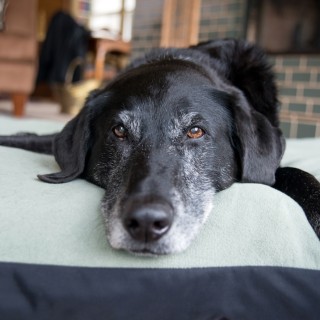The key to maintaining your dog’s healthy joints: A holistic mindset! by Dr. James St. Clair
In my first two blog post here on the Grey Matters Blog we discussed simple signs for you to look for to potentially identify if your dog has joint pain or not. We then introduced the concept of “The Pain Trial,” which all dog owners should know about and be able to discuss with their veterinarian. I have listed these posts for easy reference, in case you missed them.
Top Dog Health Series:
- Is my dog in pain? What to look for and how to listen.
- The Pain Trial Concept for Dogs: What is it and why is it important?
Now the conversation is going to shift focus from how to identify joint pain to what we can actually do to help our dogs. My goal is to answer some of the major questions you may have and provide you with both practical and useful information that you can use in helping your dog’s joints.
Before I get started, please understand that this is a massive topic and one that I have spent the last decade of my professional career focusing on. That being said, my plan over the next few weeks is to cover three major topics that I believe are critical to your dog’s joint health: the importance of a holistic mindset, which I cover here; joint supplements; and pharmaceutical options. I am leaving out alternative therapies such as acupuncture, which I 100% advocate for pain management, as well as herbal therapies. I am also not going to go into great detail about the importance of weight management, but I absolutely have to mention it. Please make sure that your dog is at their ideal body weight to reduce additional stress to the joints.
Thinking Holistically
When you think of improving your dog’s joint health you need to think holistically about the joints. Yes, improving what is going on “inside of each joint” is important, but improving what is going on “outside of the joint” is equally as important. What do I mean by this?
The joints are a part of the musculoskeletal system. That system includes the muscles supporting the joint, the ligaments and tendons surrounding the joint, the bones that come together to make up the joint, and, of course, the joint itself—comprised of joint cartilage, joint fluid, and the joint capsule. The problem I see is that people often overlook the importance of these muscles and soft tissue when in reality they are critical to the support and success of the whole system.
Fact: As a dog begins to experience increased joint pain they begin “slowing down,” not being as active, sleeping more or sleeping longer, essentially slowly beginning to move around less and less. In the early stages this is very, very subtle. In fact, most dog owners never even “see” the change that is actively occurring right before their own eyes until one day they think “Wow, Daisy has lost muscle.” We all understand the concept “if you don’t use it, you lose it”; well the same holds true for our dogs. Maybe you used to walk your dog 2 miles a day and now they only want to go 1.5 miles—that decrease in exercise has an impact on the amount of muscle the body needs.
Fact: The less active you are, the less muscle you need. Think about this: If you had to pick up a 100-pound box every day, multiple times a day, then your body is going to essentially grow the muscles required to pick up that 100-pound box more efficiently (i.e., you will build the muscle needed to pick up 100 pounds).
My point is this—when it comes to your dog, keep in mind that muscles are critical to joint support and overall health; therefore we need to think about ways we can build and strengthen the muscles around the joints that are causing problems for our dogs. On our website, www.topdoghealth.com, we have videos detailing a variety of exercises that you can do with your dog to build and strengthen their muscles. The stronger the muscles, the better support your dog’s joints have. The weaker the muscles, the more stress is placed directly on the inside of the joint, resulting in more pain.
Stay tuned! Now that we have some basic information on how joints work, I’ll discuss specific steps you can take to improve your dog’s joint health in my next two blog posts.
Note: I often talk about learning how to “Think Like a Personal Trainer” for your dog. If you and your dog need additional coaching on physical exercises that would benefit their joint health, I strongly encourage you to seek out a professional canine rehabilitation expert to assist both of you. The number of these experts is growing nationwide. They have incredible knowledge and conditioning equipment. If you need help locating one, visit www.topdoghealth.com and access our canine rehabilitation directory. We regularly update this listing as a resource to dog owners like you.
About the Contributor:
Dr. James St. Clair, is author of Dogs Don’t Cry, an Amazon #1 Best Seller. He is also the author of the 5-Star Rated, Top Dog Health Home Rehabilitation Guides which provide step-by-step instructions on how best to help your dog recover after some of the most common orthopedic surgeries. Dr. St. Clair currently owns a progressive four-doctor small animal practice in central Connecticut. In 2004 he founded Top Dog Health & Rehabilitation which is now one of the internet's most trusted sources for pet owner information and products when it comes to orthopedic surgery and joint health management. Dr. St. Clair is passionate about education and making dogs comfortable and pain free.



